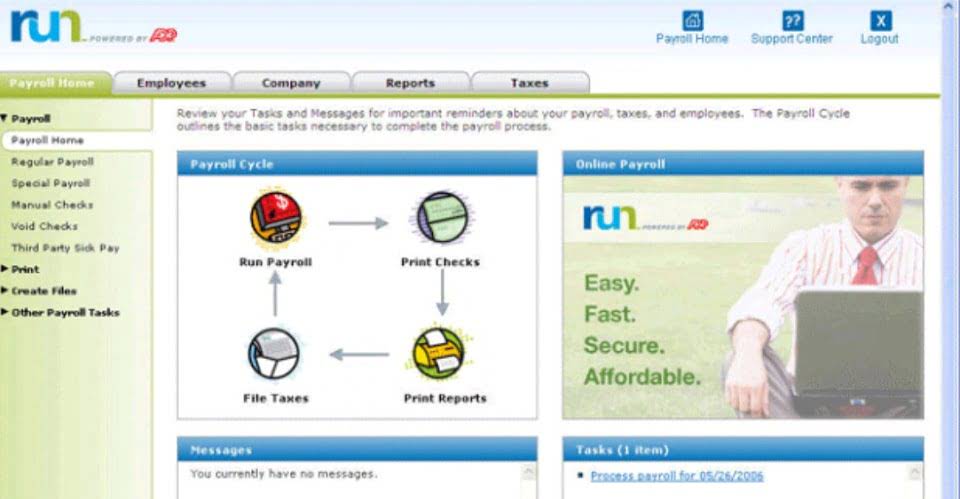The break-even price refers to the minimum price at which you must sell a product to cover all your costs, ensuring you neither profit nor incur a loss. Comprehending the break-even price is crucial for ripple settles with youtube over xrp scam suit setting financial goals and optimizing your pricing strategy. When trading options, comprehension of the break-even price is essential, as it determines the level at which your investment begins to generate profit.
Managers utilize the margin of safety to know how much sales can decrease before the company or project becomes unprofitable. If it will take a longer time to reach a break-even point, based on your calculation, then you may need to alter your plans to increase the price, reduce cost or do both. It is a key element when you want to carry out financial projections for new products, product expansion, and start-ups. This analysis will provide information different types of bitcoin wallets that you need to know about 2020 on the capital required to bring an idea to life, and if you will need to borrow funds to make that happen. The break-even price is the point at which investment return equals the total cost of your investment. Incorporating these elements is fundamental for a realistic assessment of your investment’s profitability.
Set a target for the number of units sold
The break-even price is the price at which a product generates no profit or loss. When you start a business from an idea, you want it to be successful and sustainable. In these circumstances, a lower break-even point is appropriate when you are neither profitable nor losing.
Our products keep your overhead low and operations streamlined, allowing you to scale up or down to cut unnecessary costs and hit your break-even point quicker. In summary, mastering break-even pricing empowers businesses to make informed decisions, optimize profitability, and navigate market fluctuations effectively. Remember that break-even analysis is not a one-time exercise; it’s an ongoing process that aligns with strategic goals. Remember, these factors interact with each other, and businesses need to carefully consider them when determining break-even pricing. By understanding these influences, businesses can make informed decisions and set prices that ensure long-term sustainability and profitability. Imagine a small bakery that wants to determine the break-even price for its specialty cakes.
Why is break-even pricing important for your business?
Utilizing break-even analysis empowers you to navigate uncertainties, ensuring your business remains financially viable and adaptable in a changing market. Market changes can greatly impact your price break-even point, requiring you to adjust your pricing strategy. Even though price break-even analysis can be a useful tool for determining the minimum sales needed to cover costs, it has several limitations that you should be aware of. Moreover, it supports investment decisions by demonstrating effective cost management, which can improve investor confidence and attract necessary funding. This means the company needs to sell 10,000 units to cover all costs and reach the break-even point.
For a call position you own to be profitable at expiration, it must remain above the strike price plus your initial investment. At this level, option premiums will minimally equal your cost when you bought the call. For example, variable costs may decrease during an economic downturn due to lower material costs. Grasping your price break-even point is crucial for effective cost management, as it provides a clear benchmark for determining the minimum selling price necessary to cover all expenses.
- Grasping the price break-even point isn’t just about understanding a formula; it plays a vital role in your business’s financial health.
- A good example is when you calculate the minimum sales needed to cover the expenses required to enter a new market or open a new location.
- By understanding the nuances of the break-even point and conducting thorough analysis, businesses can make informed decisions about pricing, production levels, and overall financial stability.
Break-even pricing
Grasping the price break-even point is essential for maneuvering your business’s financial environment, as it directly influences your pricing strategy and overall profitability. Furthermore, focus on reducing variable costs by negotiating better rates with suppliers or optimizing your production processes. Knowing your price break-even point equips you with the ability to develop informed pricing strategies, ensuring that all costs are covered during competition. Comprehending price break-even analysis is crucial for effective financial planning and pricing strategy optimization. Gain crucial insight into your business’s financial viability, covering costs and driving strategic decisions.
Break-Even Price: Definition, Examples, and How To Calculate It (Updated
By knowing the total fixed costs, the volume of the production, and the variable costs per unit, the company can calculate the break-even price. It should be considered that the total amount counted as fixed costs will remain constant, unlike the variable costs, which will differ according to the production. Thus, economies of scale will be the target here, as more production units will mean lower fixed costs and controlled variable costs per unit. A break-even analysis helps businesses choose pricing strategies, and manage costs and operations. In stock and options trading, a break-even analysis helps determine the minimum price movements required to cover trading costs the ultimate guide to okex and make a profit. Traders can use a break-even analysis to set realistic profit targets, manage risk, and make informed trading decisions.
Examples of Price Break Even Point Calculations
A break-even analysis is a useful calculation in finance that compares the expenses of a new product, service or business with the unit sell price to identify the break-even point. It has to bear $5,000 on salaries and $500 on accountant fees on tallying sales achieved by the restaurants. It’s essential for setting realistic sales targets and comprehending the minimum sales volume needed to cover your expenses.
- Fixed costs, like rent and salaries, remain constant regardless of how much you produce, whereas variable costs, such as materials and direct labor, change with production volume.
- Businesses also leverage breakeven analysis when evaluating new products or ventures.
- Once these costs are recuperated, every additional cup sold contributes to profit.
For example, if you buy a put spread with a $50 long put strike price for $1.00, the break even point is $49. The underlying security must be below $49 at expiration for the position to profit. This short video explains how to calculate a bull put spread’s break even price in more detail. The break-even point (BEP) is where the total money coming into your business (revenue) matches what’s leaving (expenses). A costly public feud between CEO Elon Musk and President Donald Trump, while not extending valuable EV credits, has apparently cooled. Comprehending how to calculate the price break-even point is just the beginning; applying this knowledge through real-world examples can greatly improve your business strategy.
To calculate this, use the break-even price equation, which adds total fixed costs to total variable costs and divides by the expected number of units sold. For instance, if your total fixed costs are $200,000 and you have variable costs of $5 per unit, selling 10,000 units means your break-even price is $25 per unit. Several factors influence the break-even price, including fixed costs, variable costs, selling price, and demand elasticity.
Examples include monthly rent for office space or a factory, annual insurance premiums, executive salaries, and property taxes. Such costs are incurred even if no products are manufactured or no services are rendered. The break-even point is the level of sales at which a business neither makes a profit nor incurs a loss. It can be calculated by dividing the total fixed costs by the contribution margin per unit. Understanding the break-even point helps businesses set realistic sales targets and evaluate the impact of pricing changes.
Calculating the break even price for options strategies isn’t as complicated and overwhelming as it may seem. It’s actually quite simple and an invaluable concept to master because it’s critical to risk management. In essence, break-even pricing serves as a foundational tool for financial management, empowering businesses to achieve sustainability and profitability in the ever-changing marketplace.
The sales price per unit plays a key role; increasing it can lower your break-even price, whereas decreasing it raises the break-even point. Furthermore, the contribution margin, which is the sales price minus variable costs, shows how much revenue helps cover fixed costs. The break-even point is a crucial concept in business and finance that helps determine the minimum level of sales required to cover all costs and expenses. For example, with total fixed costs of £40,000, a selling price of £13, and an average variable cost of £8, you’d need to sell 8,000 units to break even, ensuring you cover all expenses. Grasping the break-even price goes beyond just calculating a number; it plays a fundamental role in a business’s overall strategy. Recognizing this price helps you set realistic sales targets and pricing strategies by clarifying the relationship between costs, sales volume, and profit margins.




